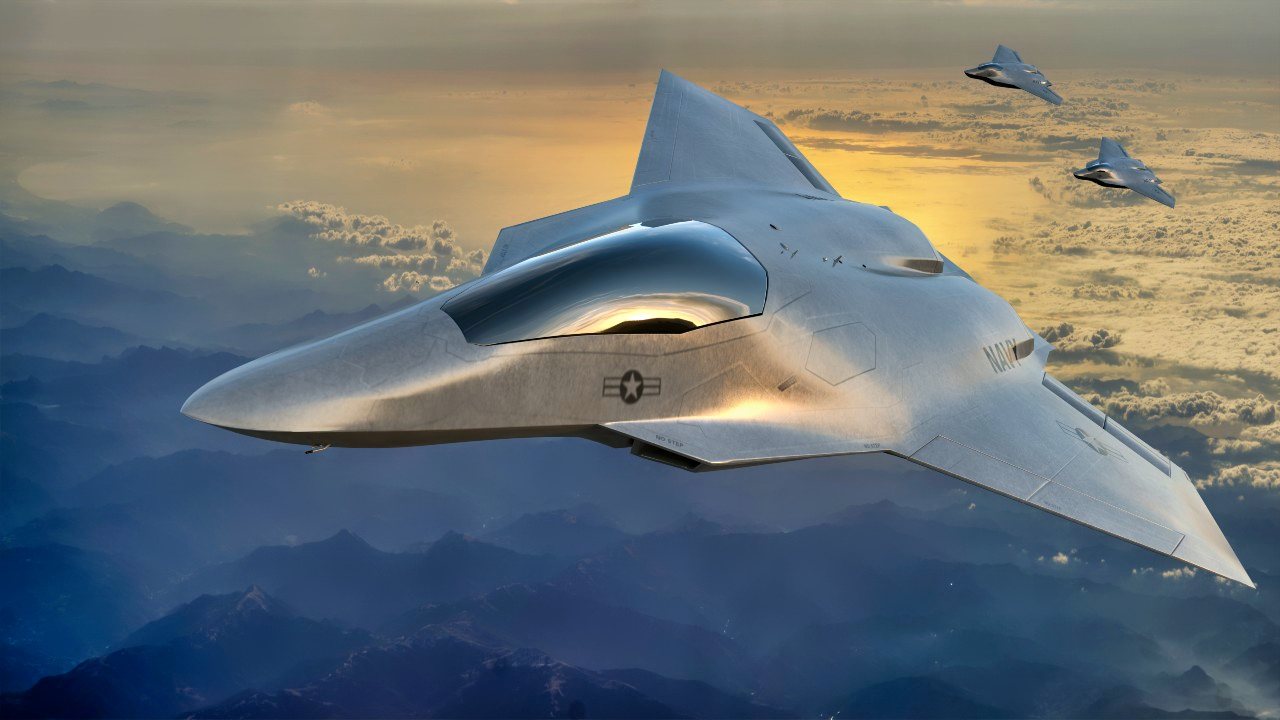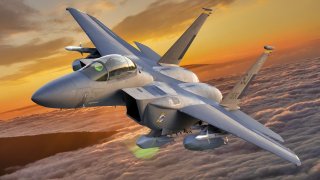Boeing's F-15EX Eagle II: Why Buy This Missile Truck with NGAD Coming Soon?
While introducing the F-15EX Eagle II will undoubtedly elevate the Air Force’s capabilities in the skies, the upcoming NGAD sixth-generation fighter program will likely be prioritized, push come to shove.
F-15EX – just a giant missile truck. That alone explains why the Air Force wants it: During the final days of 2023, the U.S. Air Force’s two newest fighters touched down at Eglin Air Force Base. The two F-15EX Eagle II jets sport an array of enhancements that make them arguably the most formidable fourth-generation platforms to fly the skies.
From new communication systems to jaw-dropping ordnance capacity, the latest Eagle iteration is truly a powerhouse. The recently delivered EX3 and EX4 fighters feature capabilities to be tested that the initial two jets in the Eagle II family did not possess, including the cockpit pressure monitor and warning system in addition to an ultra-high frequency antenna for satellite communications.
The Eglin Air Force Base Public Affairs released a statement following the delivery of the two newest Eagle II fighters : "The F-15EX has met every challenge we’ve thrown at it to date and the platform is on the cusp of being ready for the warfighter," said Lt. Col. Christopher Wee, Operational Flight Program Combined Test Force commander.
"The delivery of the new aircraft paves the way for not only the delivery of combat coded aircraft to the U.S. Air Force, but also the continued development of this incredible addition to the USAF inventory."
A Brief History of the F-15 EX Eagle II Fighters
Following lessons learned during the Vietnam War, the U.S. military better understood the need for a powerful multi-role fighter.
The then-Defense Secretary Robert McNamara tasked the Air Force and Navy to develop a joint airframe that could serve the individual needs of both services. By the mid-1960’s, studies of the “F-X” program commenced, prioritizing maneuverability over speed. Eight American manufacturers submitted proposals for the new prototype. Many of these designs featured models with variable-sweep wings, top speeds of Mach-2/7 (times the speed of sound), and thrust-to-weight ratios of .75.
When the Soviet Union introduced its Mikoyan-Gurevich MiG-25 in the late 1960s, American engineers generally believed it to be more advanced than the F-4 Phantom. While the F-X could outperform the MiG-23, the newer Soviet jet appeared to be faster and more capable than other U.S. fighters. Efforts to improve the F-X began around this time, culminating in the F-15 Eagle that is so widely recognized today.

Once the Eagle entered service, it would remain the backbone of the country’s aerial fleet for decades. Fast forward to today, upgraded variants of the Eagle are replacing aging airframes indicating that the platform is here to stay. In recent years, the Air Force desired a fighter capable of carrying many air-to-air missiles and equipped with an AESA radar among other new technologies. At a time when the F-22 Raptor was no longer being produced and the F-35 Joint Strike Fighter production was being delayed, the F-15EX was selected by the Air Force. Able to fly at speeds of Mach-2.5, the new Eagle iteration is actually faster than the legendary fifth-generation Raptor.
F-15EX - Specs and Capabilities
The latest Eagle platform was constructed to carry out long-range, high-speed flights without needing to rely on accompanying or electronic-warfare aircraft. In terms of ordnance, the new Eagle can pack a punch. Specifically, the airframe can lug up to 30,000 pounds of munitions, a much larger capacity than the F-35, which is limited to carrying roughly 6,000 pounds. The Eagle also sports conformal fuel tanks positioned along the airframe’s intake ramps and a tandem-seat cockpit.

In addition to fly-by-wire flight controls and upgraded weapons systems, the Eagle II will feature a cutting-edge electronic warfare suite and advanced radar. Notably, a Congressional Research Service report detailed that roughly 30% of the new Eagle iteration would be unique to the U.S. military. While the Eagle II will lack the stealth and other capabilities incorporated onto the fifth-generation Lightning II, the platform will still be equipped to serve as airborne controllers for future Collaborative Combat Aircraft (CCA). As part of the Air Force’s Next-Generation Air Dominance program (NGAD), CCAs will serve as “loyal wingmen drones” to the sixth-generation fighters they will accompany.
F-15EX Eagle II: Just Too Expensive with NGAD Coming Soon?
Perhaps the biggest downfall associated with the Eagle II is its price, especially with the NGAD fighter being just around the corner.

Costing around $90 million per airframe, the latest Eagle variant is more expensive than the F-35 Lightning II which costs around $80 million/per jet. However, the Eagle’s role as the Air Force’s new fighter “bomb truck” makes the platform well worth the hefty price tag. Additionally, the new fighter is expected to have an extended service life - about three times as long as its fifth-generation F-35 counterpart.
While introducing the F-15EX Eagle II will undoubtedly elevate the Air Force’s capabilities in the skies, the upcoming NGAD sixth-generation fighter program will likely be prioritized, push come to shove. If and when a kinetic war between Washington and Beijing does break out, the Air Force will be well-equipped to handle any threat.
About the Author: Maya Carlin
Maya Carlin, National Security Writer with The National Interest, is an analyst with the Center for Security Policy and a former Anna Sobol Levy Fellow at IDC Herzliya in Israel. She has by-lines in many publications, including The National Interest, Jerusalem Post, and Times of Israel. You can follow her on Twitter: @MayaCarlin.
All images are Creative Commons.


